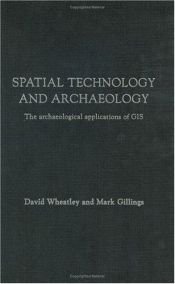SPATIAL TECHNOLOGY AND ARCHAEOLOGY: The Archaeological Applications of GIS
Resumen
Geographical Information Systems (GIS) and related spatial technologies have a new and powerful role to play in archaeological interpretation. Beginning with a conceptual approach to the representation of space adopted by GIS, this book examines spatial databases; the acquisition and compilation of data; the analytical compilation of data; the analytical functionality of GIS; and the creation and utilization of critical foundation data layers such as the Digital Elevation Model (DEM). The ways in which GIS can most usefully facilitate archaeological analysis and interpretation are then explored particularly as a tool for the management of archaeological resources. Formal analysis of archaeological material, and the use of trend surface, contouring and interpolation procedures are considered along with predictive modeling analysis of visibility and intervisibility. Finally there is a discussion of leading-edge issues, including three-dimensional GIS, object-oriented GIS, the relationship between GIS and 'Virtual Reality' technologies, and the integration of GIS with distributed systems and the Internet.The approach is light, and technical detail is kept to a minimum, recognizing that most readers are simply interested in using GIS effectively. The text is carefully illustrated with worked case-studies using archaeological data. Spatial Technology and Archaeology provides a single reference source for archaeologists, students, professionals, and academics in archaeology as well as those in anthropology and related disciplines.

 Español
Español English
English Deutsch
Deutsch








Reseñas de los usuarias/os Escribe tu propia reseña
Sé el/la primera/o en reseñar
Log inir al comentario